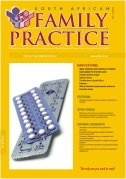Prostate Specific Antigen – Brief Update on its Clinical Use
Keywords:
prostate specific antigen, clinical use
Abstract
Prostate specific antigen (PSA) testing of asymptomatic men enables the diagnosis of localised prostate cancer which is potentially curable, but it also poses certain risks. Doctors run the risk of litigation for failure to diagnose cancer at a curable stage, while patients run the risk of being diagnosed with non-significant cancer, incurring costs and possible complications without any survival benefit. PSA reflects a ‘range of risk’ for prostate cancer: the higher the PSA, the greater the risk. There is no ‘normal’ PSA, because even with a PSA below 4 ng/ml cancer can be detected on biopsy in up to 20% of men. However, the prevalence of high-grade (life-threatening) cancer is relatively low at low PSA values. The following recommendations appear reasonable: • PSA testing should be offered to all men aged 50 years or more (45 years in those with a family history of prostate cancer and – possibly – African men); • Alternatively, PSA testing should be done at 40, 45 and 50 years and then every two to four years (the lower the baseline value, the lower the risk of ever developing prostate cancer); • PSA testing should be repeated annually if it is more than 2 ng/ml and every two years if less than 2 ng/ml; • Stop PSA testing in asymptomatic men over 75 years or with less than 10 years’ life expectancy, and in those aged over 65 years with PSA less than 0.5 to 1 ng/ml. The free-to-total PSA ratio and PSA density (PSA divided by prostate volume) can be used to decide which patients need prostatic biopsy. PSA velocity (increase of PSA per year) can predict which men are likely to develop prostate cancer or to die of it (the higher the PSA velocity, the greater the risk). PSA doubling time (the period it takes for the PSA to double) correlates with the prognosis both before and after treatment (the shorter the doubling time, the worse the prognosis). An internet Prostate Cancer Risk Calculator is available which calculates a man’s risk by taking into account his age, race, family history, PSA level, findings on rectal examination and prior negative biopsy. Although this is a very convenient tool, it should be used with caution, especially at low PSA values, because there is a real risk of overdiagnosis.
Published
2008-03-28
Section
CPD
By submitting manuscripts to SAFP, authors of original articles are assigning copyright to the South African Academy of Family Physicians. Copyright of review articles are assigned to the Publisher, Medpharm Publications (Pty) Ltd, unless otherwise specified. Authors may use their own work after publication without written permission, provided they acknowledge the original source. Individuals and academic institutions may freely copy and distribute articles published in SAFP for educational and research purposes without obtaining permission.

